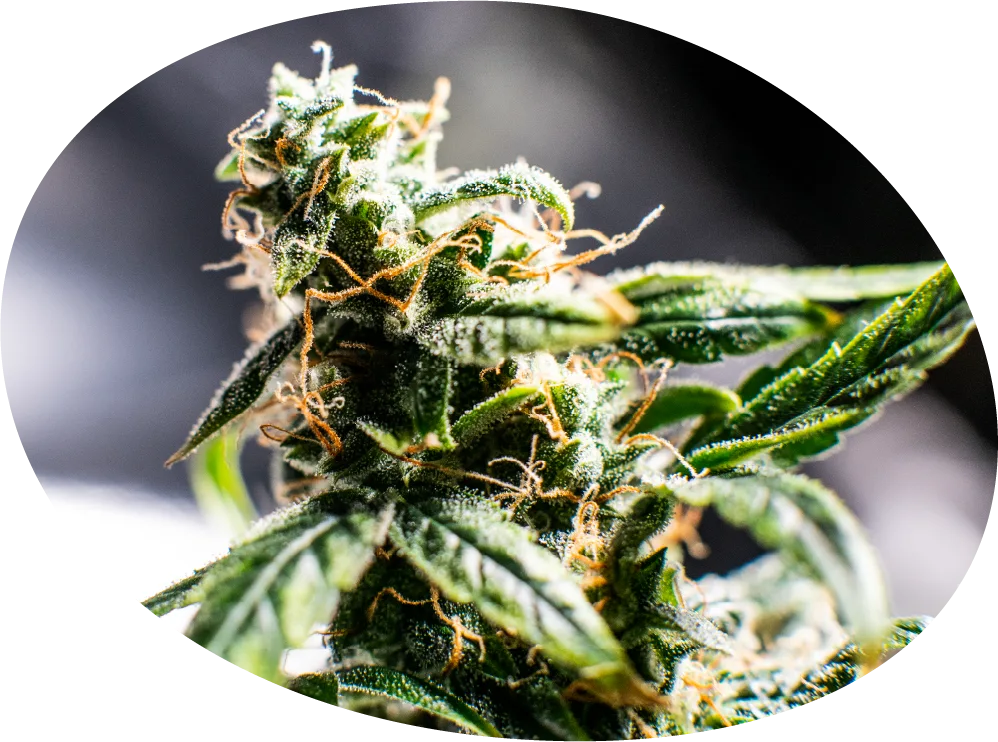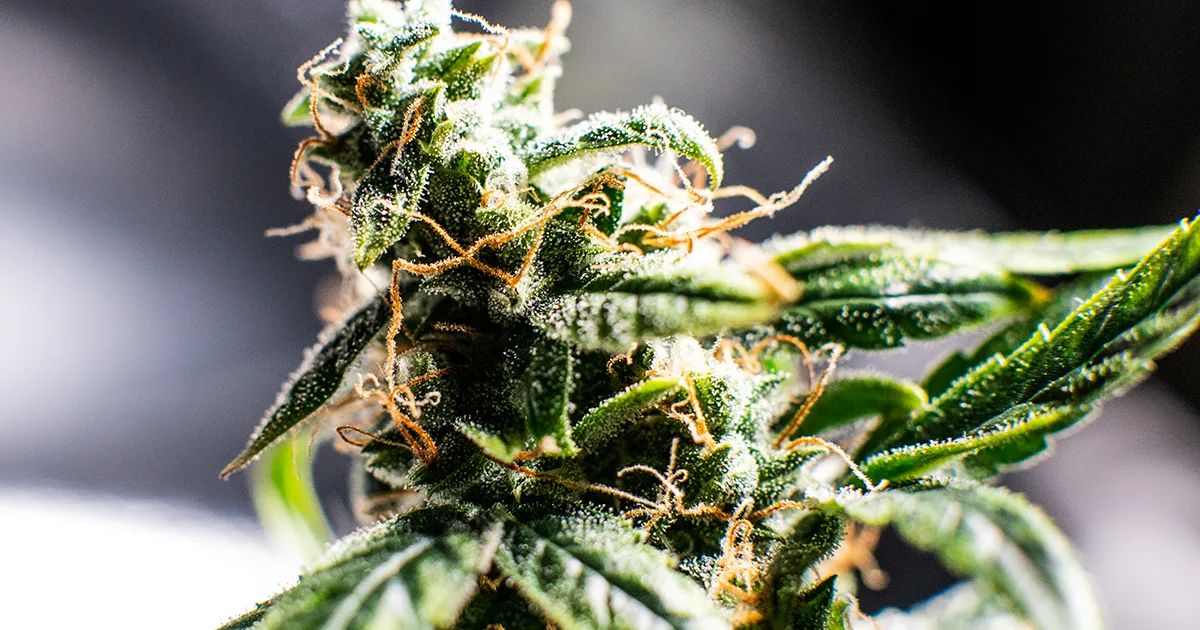Terpenes
The nose knows
The relationship between terpenes and cannabinoids, known as the “entourage effect,” may ultimately differentiate the effects of one strain of cannabis from another.

What are terpenes?
Terpenes, and terpenoids, are naturally occurring aromatic compounds found in many plants. Often, they are responsible for the characteristic smells (lavender, pine trees, and oranges as examples) and are the major constituent of plant essential oils and resins. Terpenes act, among other things, as natural plant defense mechanisms against insects and pests, in some instances deterring predator insects and animals and attracting beneficial insects and animals like bees in others.[1]
Terpenes have extensive uses in everyday life including foods, cosmetics, aromatherapies, perfumes, and pharmaceuticals. Many terpenes also have bio-active properties and are used in medical applications for the treatment of human diseases in conventional western medicine, including anti-cancer and anti-malarial pharmaceuticals.[2]
Terpene molecules are quite small and consist of repeating building blocks called isoprene units. Many terpenes act synergistically with other varieties of terpenes, and some either catalyze or inhibit formation of different compounds within a plant. Understanding the structures and functions of terpenes and terpenoids allows scientists to tailor research, breeding programs, and formulation of products toward specific outcomes and effects.
Dominant Terpenes Found in Cannabis
With a wide variability in terpenoid composition, SC Labs finds that strains generally have the following 6 terpenoids as the dominant terpenoid in order from most common to least: Myrcene (~43%), β Caryophyllene group (~23%), Limonene group (~16%), Terpinolene (~10%), α Pinene (~6.5%), and the β-ocimene outlier group (<1%).
Myrcene
Myrcene is the terpene most frequently found in cannabis, and is often described as earthy and herbal. Myrcene is found in hops, thyme, lemongrass and mango. Strains in which Myrcene is the dominant terpene represent the largest proportion of strains currently available in the market. Myrcene dominant strains, such as Cherry Pie and Blue Dream, often have Myrcene in amounts in excess of 50% of the total terpene content.
Functionally, Myrcene interacts with TRPV1 and the opiate system to produce pain relieving effects. We know this based on studies using pharmacological interventions. When naloxone (Narcan) and opioid antagonist is applied prior to treatment with myrcene, the analgesic effects of myrcene are blocked.[3] Similarly in the context of TRPV1, when the TRPV1 antagonist capsazepine is applied prior to treatment with myrcene the pain relieving effects are blocked.[4]
Common Myrcene dominant strains: Blue Dream, OG Kush, Green Crack
α Pinene
α Pinene, not to be confused with its isomer β pinene, is found in dill, basil, rosemary, and parsley, in addition to pine needles and other conifers. α Pinene offers numerous benefits including anti-inflammation[5,6], anti-microbial[7], anti-cancer[8], and anti-anxiety[9].
α Pinene’s neuroprotective properties may offer even more promise. It may be beneficial not only against a broad range of degenerative disorders including Alzheimer’s disease, general dementia, amnesia, cognitive dysfunction, and overall memory loss.[10] Pinene may also have positive effects on memory by inhibiting the degradation of the neurotransmitter acetylcholine, which is critical for short term memory and may help mitigate the effects of THC on memory.[11]
Common α Pinene dominant strains: Taffy, Laughy Taffy, Sour Carmello, Amaretto Sour, Royal Pineapple
Limonene
Limonene is common to the lemon and other citrus essential oils, and is the second most widely distributed terpenoid in nature.[12] This monoterpene produces uplifting and energizing effects. These effects are thought to be caused by its agonist effects at the serotonin receptor 5-HT1A.[13] Limonene may offer promise for those suffering from gastro intestinal issues as D-limonene exhibits anti-inflammatory and antioxidant properties in ulcerative colitis.[14]
Common Limonene dominant strains: Wedding Cake, MAC, Dos-Si-Dos
β Caryophyllene
β Caryophyllene is found in black pepper and cloves and is used as a flavoring agent to add both spicy and herbal notes. β Caryophyllene is one of the only terpenes that is known to interact directly with the endocannabinoid system and produces anti-inflammatory and antinociceptive effects via the CB2 receptor.[15] Additionally, there is evidence that β Caryphyllene is effective at easing localized[16] and neurological[17] pain.
Common β Caryophyllene dominant strains: GSC, Sherbert, Cheese, Huckleberry
Terpinolene
Terpinolene is incredibly common in strains but usually in very small amounts. Strains in which Terpinolene is dominant are much less common. Terpinolene has a complicated organoleptic profile with a nose described as woody and herbaceous yet floral. It can be found in nature in Lilac, Tea Tree, Apples, Cumin, and Nutmeg.
Studies in mice have shown that its inhalation produces sedating effects[18]. This terpene also exhibits anticancer and antioxidant properties[19]. Recent research is also exploring terpinolenes role in avoiding coronary heart disease in concert with other anti-oxidants.[20]
Common Terpinolene dominant strains: Jack, Classic Haze, Super Lemon Haze, Trainwreck, Dutch Treat
Ocimene
Ocimene imparts a sweet, floral and woody scent. Although present in many strains, Ocimene dominant strains of cannabis are rare. Ocimene can be found in a wide variety of plants including hops, kumquats, mangoes, basil, bergamot, lavender, orchids, pepper in varying quantities. Ocimene is used extensively in the perfume industry due to its sweet, floral, and herbaceous aromatic profile.
Ocimene is produced as a defense mechanism in response to insect predation in some plants.[21] Additionally, there is evidence that Ocimene may have anti inflammatory properties.[22]
Common Ocimene dominant strains: Harmony Rose and Pink Lemonade. Ocimene is also found in Golden Pineapple, Dutch Treat, and Dream Queen.
Secondary/Tertiary Terpenes Found in Cannabis
It is important to note that just because these ”dominant” terpenes are present in the greatest concentration across strains, it does not mean that they are the only major players in this complex equation. There are many terpenes that are consistently found in smaller concentrations in most samples of cannabis. While there are many terpenes/terpenoids, the following are commonly detected in our testing process.
3 Carene
Carene is one of the major components of the pine tree essential oils. It has known properties as a phytoncide, and anti-inflammatory, antimicrobial, and anxiolytic effects. Further, studies have demonstrated that Carene has a sleep enhancing effect and that oral administration of 3 carene increases sleep duration and reduces sleep latency. 3 Carene potentiates the GABAA receptor-mediated synaptic responses by prolonging the decay time constant of inhibitory synaptic responses.[23]
Camphene
Camphene has a pungent and herbal smell. It is a major constituent of mastic gum oil, and is a minor constituent of many essential oils such as turpentine, cypress oil, camphor oil, citronella oil, neroli, ginger oil, and valerian. Camphene has hypocholesterolemic and hypotriglyceridemic effects, lowering cholesterol and Triglicerides in control settings.[24] It also has applications in Ayurvedic practice.[25]
Caryophyllene Oxide
A sesquiterpene epoxide with a fragrance that can be described as fresh, sweet, dry, woody and spicy. It is a component used by drug-sniffing dogs to identify cannabis. It does interact with the endocannabinoid system. It’s commonly found in field wormwood, salt heliotrope, cinnamon, sticky sage, basil, and waterbessie.
Humulene
Humulene, also known as α caryophyllene, is a terpene found in the flowering cone of hops. Humulene is a significant contributor to the anti-inflammatory effects of cannabis.[28] Humulene is also believed to be an active mechanism in fighting tumors, evidenced by its ability to produce Reactive Oxygen Species (ROS).[29]
β Pinene
β Pinene similar to its isomer α pinene also exhibits anti-inflammatory properties. It also has anxiolytic effects.[37]
α Terpinene and γ Terpinene
α, β, and γ Terpinene exhibit antioxidant properties and are also found allspice, eucalyptus, citrus, juniper, tea tree, cardamom, and marjoram. The α isomer is also being investigated as anticancer compounds.[38]
Terpineol
Interestingly, terpineol exhibits anti-depressant activity which appears to be mediated by the ECS and the dopamine receptor D2.[39]
Terpene testing
Discover anticipated entourage effects
Our test solution provides guidance for manufacturers, extractors, and brands that are looking to deliver low-level THC products. Explore how testing for Trace THC can help your business stand apart from the rest.
With an expansive test menu that targets 40 terpenoids, fast turnaround times, and an integrated reporting portal, the SC Labs Terpenoid Testing Solution provides cultivators and processors a reliable tool to make informed decisions. This advanced test solution features gas chromatography-flame ionized detection (GC-FID) equipment and test methods—offering definitive, quantitative results.
Know your medicine™
References
Statement on Terpene Effects and Health Related Claims
The suggested effects and health potential for cannabis and hemp derived terpenes are seemingly endless. However, we’ve only scratched the surface of terpene research. While studies into therapeutic benefits and psychoactive effects have been performed, some of the evaluations were based on animal models or research of an isolated compound. It is generally accepted that the synergies of cannabinoids and terpenes can effectively amplify effects as a whole. However, industry professionals will need to continue to invest more time and effort into researching these complex interactions and how they affect the human body.
Let’s talk about your testing needs
Our experts are always ready to answer your questions.

